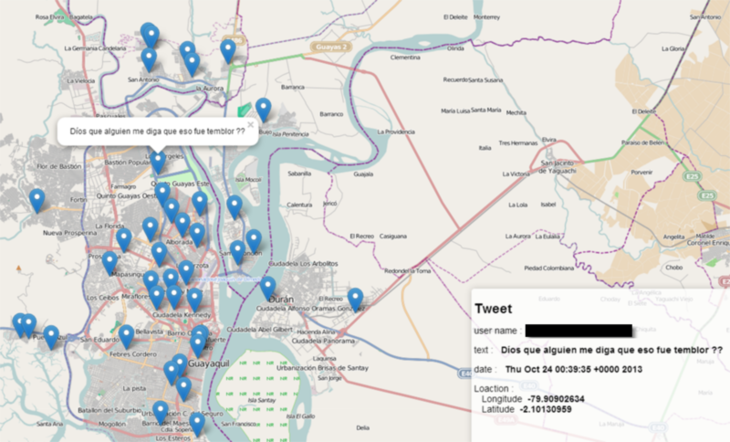Project Description
In case of natural disasters, modern sensor networks provide high quality data. These measurements, however, are only mapping disjoint values from their respective locations for a limited amount of parameters. Using observations of witnesses represents one approach to enhance measured values from sensors ("humans as sensors"). These observations are increasingly disseminated via social media platforms such as Facebook, Twitter, Youtube and Flickr.Every user of these social networks can be regarded as a mobile, virtual sensor ("social sensor").
These "social sensors" offer several advantages over common sensors, e.g. high mobility, high versatility of captured parameters as well as rapid distribution of information. Moreover, the amount of data offered by social media platforms is quite extensive. On the other hand these data are often subjectively influenced by the observer and of varying quality and quantity. Methods and techniques, which identify appropriate information, need to be developed to enable the usage of social media data for applications in disaster management.
The project's goal is to gather data from social media platforms that can be applied for rapid damage estimation in combination with common sensors.

Fig. Ad-hoc visualisation of Twitter messages concerning an earthquake in Guayaquil, Ecuador.

